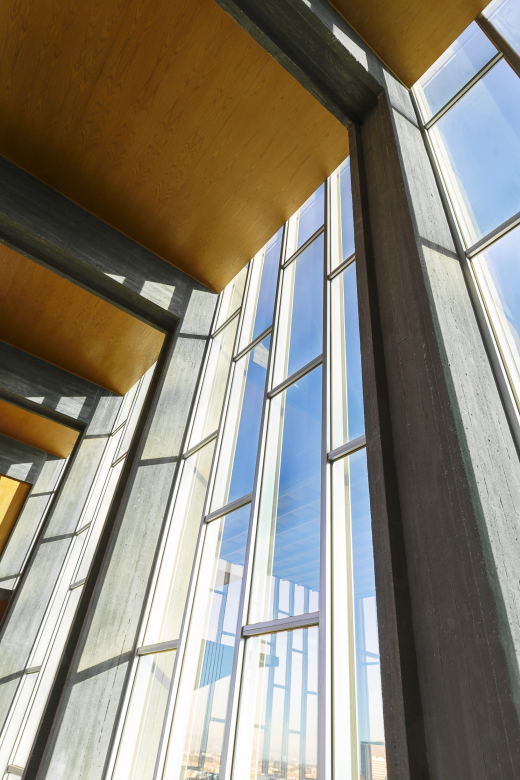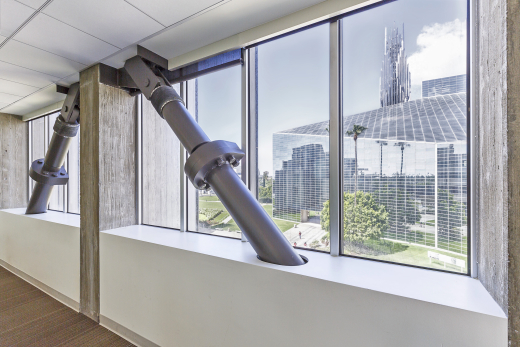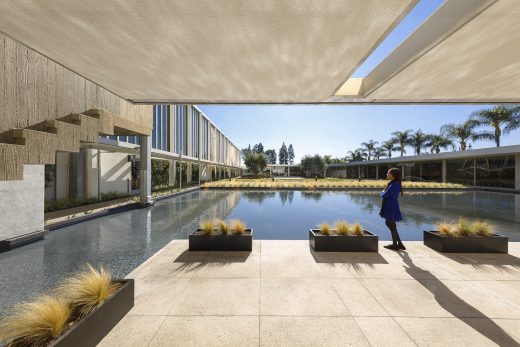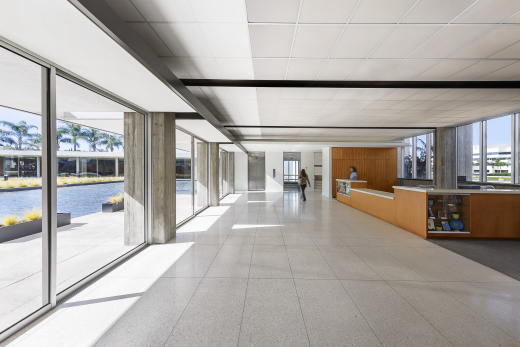Catholic Diocese of Orange Saves an Architectural Landmark
This is the story of a prominent piece of architectural history saved from the wrecking ball and the fusion of art and science that made it possible.
Built in 1968, the Christ Cathedral Tower of Hope has been an important Southern California landmark for almost fifty years. Designed by celebrated architect Richard Neutra in association with his son Dion, the 13-story cast-in-place concrete tower has been called “an overlooked masterwork in Neutra’s oeuvre” by architectural historian Barbara Lamprecht. Once the tallest building in Orange County, the structure is notable for its small but daylight-rich floor plates and vertigo-inducing cantilevered, post-tensioned exterior concrete stairs. The primary structural frame of the tower consists of concrete slabs and beams supported by rectangular and trapezoidal board-formed concrete columns.
In 2012 the Roman Catholic Diocese of Orange purchased the Rev. Robert Shuller-led Crystal Cathedral campus in Garden Grove, California to serve as its long-planned diocesan cathedral, and promptly renamed it Christ Cathedral. The Diocese did an exemplary job of rehabilitating Neutra’s other work on the campus, the 1962 Arboretum “walk-in/drive-in church”. However, the fate of the Tower of Hope was in doubt. A seismic assessment suggested that it was the most vulnerable building on the Cathedral campus because of the limited ductility of the concrete moment frames that form the tower’s primary seismic force resisting system.







